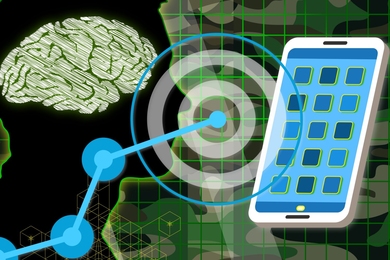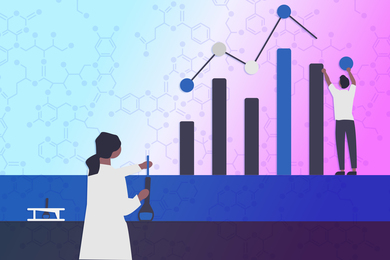Top 10 AI News
Latest Tech & AI News
MIT researchers develop AI tool to improve flu vaccine strain selection

MIT scientists introduce VaxSeer, a machine-learning tool that predicts how influenza viruses evolve and how strongly our immune system will recognize them, aiming to make vaccine strain selection more accurate and less reliant on guesswork.
Simpler models can outperform deep learning at climate prediction

New research suggests that traditional, simpler models can sometimes predict local climate variables (temperature, rainfall) more reliably than deep-learning AI, because the natural variability in climate data can confuse AI systems that are over-engineered for complexity.
New technologies tackle brain health assessment for the military

MIT Lincoln Laboratory researchers have developed rapid, AI-powered tools for screening brain health in soldiers after mild traumatic brain injuries. These approaches build on years of research to analyze data quickly, and could also apply to civilian settings like sports or clinics, providing fast results on a tablet or mobile device.
Can large language models figure out the real world?

MIT researchers propose a new test to check if AI systems trained to make predictions in one domain can actually apply that understanding elsewhere. The experiment, using large language models, assesses whether the model’s predictions generalize beyond its original training domain, shedding light on how well these systems truly ‘understand’ the world.
A new model predicts how molecules will dissolve in different solvents

MIT engineers have created a machine-learning model that predicts how different solvents affect the solubility of molecules. This could streamline drug discovery by anticipating how a potential drug dissolves without extensive lab testing, reducing trial-and-error and curbing the use of potentially toxic chemicals.
Researchers glimpse the inner workings of protein language models

A new methodology reveals how AI models designed to predict protein functions actually work internally. By peeking into the “black box” of these protein language models, scientists identified which features of a protein trigger the AI to flag it as a good drug or vaccine target, improving transparency of AI-driven bio-design.
How AI could speed the development of RNA vaccines and other RNA therapies

MIT engineers used a machine-learning model to design specialized lipid nanoparticles that deliver RNA to cells far more efficiently. This AI-driven approach could greatly accelerate the development of new RNA-based treatments and vaccines by optimizing delivery vehicles in silico before lab testing.
Using generative AI, researchers design compounds that can kill drug-resistant bacteria

MIT researchers applied two AI methods to design new antibiotic compounds. One algorithm generated starting molecules with antibacterial features, and the other refined them. This led to candidates that can tackle multidrug-resistant bacteria (including MRSA) with promising effectiveness, demonstrating AI’s power in drug discovery.
A new way to test how well AI systems classify text

Researchers at MIT have developed a novel testing framework for text-classification AIs. By challenging AI models with hard-to-classify text snippets, the framework reveals how confidently (and correctly) the systems label content, highlighting their reliability and areas where they might still make mistakes.
Helping data storage keep up with the AI revolution

Cloudian, a company co-founded by an MIT alumnus, is developing distributed storage systems optimized for massive AI workloads. Their servers and software help companies efficiently feed huge datasets to AI models at scale, addressing one of the key infrastructure challenges of the AI boom.
MIT tool visualizes and edits “physically impossible” objects

Researchers at MIT’s CSAIL have created Meschers, a tool that lets users interactively draw and manipulate 2.5D versions of Escher-like impossible shapes. By bridging 2D and 3D representations, Meschers helps designers and scientists explore optical illusions in a new dimension.
New algorithms enable efficient machine learning with symmetric data

MIT mathematicians have developed a new approach that lets AI models train more efficiently on data with symmetric structures (like molecules and crystals). By exploiting mathematical symmetries, their algorithms can reduce computational cost while improving performance in fields such as drug discovery and materials design.
Two Thirds Of Canadians Are Divided On Whether AI Is Good For Society

A nationwide survey found that Canadians are split on artificial intelligence: about 34% say AI is overall good for society, 36% say it’s harmful. Views vary greatly by age group, generation and other demographics, highlighting that the AI debate remains very divided.
AI Kills Jobs, Stanford Study Finds, Especially For Young People

A multi-year Stanford University study reports that AI-driven automation is already cutting employment, especially entry-level jobs. In certain sectors, young workers (ages 21–25) have seen about 13% of jobs automated away. The finding underscores how AI adoption is reshaping the workforce.
VCF And Private AI Take Center Stage At VMware Explore 2025

During VMware’s Explore 2025 conference, Broadcom’s CEO emphasized that private cloud platforms (VCF) will be the foundation for AI-driven innovation in enterprises. VMware highlighted new AI-focused features enabling businesses to run AI models securely behind their firewalls.
Nvidia Jetson AGX Thor Dev Kit Raises The Robotics Bar With Blackwell

Nvidia’s new Jetson AGX Thor developer kit, built with the Blackwell GPU architecture, delivers datacenter-class AI performance at the edge. It signals Nvidia’s push to make powerful AI compute available for robotics and embedded systems beyond cloud data centers.
AI Is Powering A Hidden Exit Strategy To Help Businesses Actually Sell

This article explains how smart entrepreneurs use AI tools to document and optimize their business operations for an eventual sale. Automated recordings of processes and data analysis can boost a company’s valuation and ensure smoother transitions when owners exit the business.
How To Build An Emotionally Intelligent Team With AI

Leadership expert Aytekin Tank discusses how AI can help managers create more empathetic, collaborative teams. By analyzing communication patterns and suggesting improvements, AI tools can coach leaders on building trust and understanding among employees, making teams feel more connected.
Moderna’s Game-Changing Reorg Merges HR And IT

Moderna’s recent organizational change, which combined human resources and IT under one leadership, is highlighted as a bold step. This structure allows the pharmaceutical company to integrate intelligent systems into both people management and technology, reflecting how deeply AI is being woven into corporate functions.
Sweden’s Tech Titans Unite For Sovereign AI

A consortium of Sweden’s leading technology companies announced a collaboration to develop sovereign AI infrastructure. This initiative, supported by the government, aims to ensure Sweden has its own advanced AI tools and data resources for scientific, defense and industrial use, rather than relying on foreign technology.
5 Costly Marketing Technology Mistakes Businesses Will Make In 2025

Forbes contributor Bernard Marr outlines five common mistakes companies might make with marketing tech in 2025. From over-relying on AI to the detriment of human creativity to mismanaging customer data strategies, the article advises businesses on how to avoid pitfalls and adapt to AI-driven changes while maintaining genuine consumer engagement.
AI’s $1 Trillion Shakeout: Bubble, Correction, Or Market Reset
This analysis examines recent stock market volatility in AI-related companies. After a wave of selling erased about $1 trillion in AI stock value, the article explores whether this is simply a market correction or a sign of deeper shifts as excitement over AI settles into a more mature phase.
MIT Finds 95% Of GenAI Pilots Fail Because Companies Avoid Friction
A study from MIT’s Organizational Learning Center suggests that nearly all generative AI pilot projects in enterprises struggle because companies try to eliminate necessary “frictions” (new processes, cultural shifts) instead of adapting. The research argues that embracing these frictions (like rethinking work processes) is essential for AI initiatives to succeed.
AI And Open Source Redefine Enterprise Data Platforms In 2025

Analyst Robert Kramer discusses how modern enterprise data platforms are integrating open-source technologies and AI. Next-gen data warehouses are combining analytics, governance and orchestration tools, with built-in generative AI features that allow users to query and transform data using natural language and automated agents.
One Tech Tip: Ditch the chatbots and take your AI nature apps on a birdwatching hike

Instead of relying on AI chatbots for everything, the AP suggests trying AI-powered nature identification apps during outdoor activities. For example, birdwatching apps can identify birds from their calls in real time. This practical use of AI can enhance outdoor hobbies by connecting people with wildlife through machine learning.
Nvidia’s AI chip sales surged again in latest quarter, but worries about a tech bubble persist

Nvidia reported record-breaking sales of AI chips for the second straight quarter, driven by demand for data centers and AI computing. Despite these strong earnings, some investors worry about an overheated tech market. Analysts debate whether recent stock volatility is a natural market correction or a sign of an AI investment bubble.
